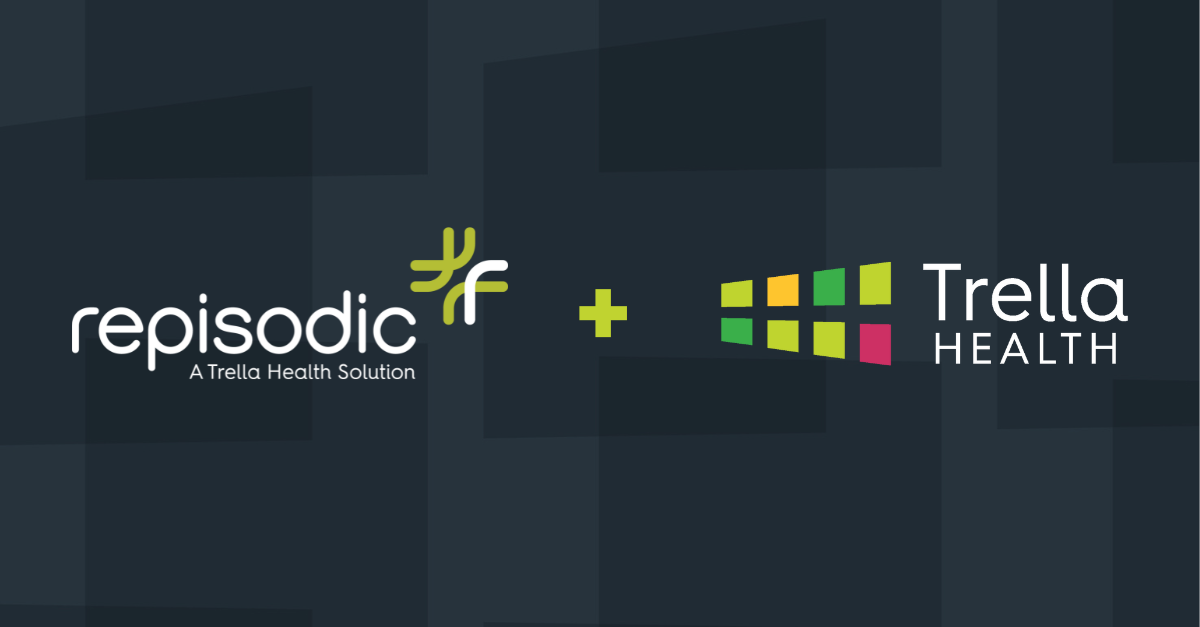Shelly Wing, Demand Generation Manager
Shelly is a passionate B2B marketing and content strategist. She creates and executes demand generation programs to make it easier for potential customers to learn about Trella’s solutions. She studied English at the University of Georgia before entering the world of sales and marketing. With experience in multifamily, SaaS, and IoT companies, Shelly consistently creates content that engages buyers at the right time and in the right way. At Trella Health, she’s excited about helping make a meaningful impact in all areas of post-acute healthcare.Webinar Recap: Leveraging Data for Skilled Nursing Growth and VBC Partnerships
By Shelly Wing | February 8, 2022
Trella Health’s Revenue Enablement Manager, Jonas Fortenberry, recently sat down with Alex Spanko of Skilled Nursing News (SNN) during SNN’s Virtual Reputation & Referral Summit to discuss the most effective and efficient targeting strategies to improve referral relationships for skilled nursing facilities (SNFs). By using data to fuel skilled nursing growth, you’ll be better equipped to partner with value-based care entities to expand market share and gain more referrals and admissions.
2022 Skilled Nursing Growth Goals: Increasing Admissions and Partnering with Value-Based Care Organizations
Trella recently published a benchmark report based on a recent survey of post-acute care organizations. The survey asked respondents to identify their primary and secondary priorities for the 2022 calendar year. Unsurprisingly, increasing referrals and admits was a top priority for 72% of SNFs. Of note, though, 33% of SNF respondents listed partnering with ACOs, DCEs, or other value-based care organizations as their secondary priority for 2022.
This finding may be surprising to some, as value-based care organizations have mainly been focused on home health care over SNF care. Fortenberry pointed out that there is often more market opportunity than you might think in this space. Regarding the quality metrics that impact value-based entities, referring appropriate patients to SNFs for post-acute care could significantly decrease readmission rates and help reduce overall cost of care.
For many SNFs, though, the question is, “Where do we start?” How can SNFs connect and make a case for stronger partnerships with these value-based organizations? Fortenberry recommended leveraging data to help SNFs tell their stories and demonstrate their value – starting with a deeper understanding of their markets. “The biggest thing is understanding your market potential,” Fortenberry said. “When you have clear visibility into the market and your competitors and referral sources, you can better understand individual relationships.”
“Many of our customers have come to us because they don’t have a clear picture of their current referral relationships. They need better insight into which accounts to target and how to reach the right people in the right markets, especially with industry-wide staffing shortages.” With this information, SNFs have the tools to identify those top targets and engage them.
Leverage Data for More Compelling Messaging
Of course, understanding your market is only the beginning. To strengthen those relationships and get more referrals, you’ll need to tell a compelling story to make your case and educate providers on the value of partnering with your facility.
There’s a big focus on home care and SNF-at-home in the post-acute care industry. In the wake of COVID-19 and other factors, value-based entities naturally gravitate toward these home-based post-acute solutions. But these aren’t always the right solutions for every patient. Educating providers on the value of skilled nursing is key.
When we look at post-acute patient pathways, “we see a lot of patients leaving an acute setting with no post-acute instructions – or with the wrong instructions for the patient. A patient may be referred to home health care and then end up re-hospitalized within 30 days because a SNF setting would have been more appropriate.” Using data on patient pathways and metrics like underutilization and readmission rates shows space in the market for SNF partnerships with value-based entities. Moreover, a partnership with your facility will help an ACO or DCE meet its benchmark goals for cost savings and improved patient outcomes.
Implementing Data-Based Targeting Strategies
As you hone your messaging to better educate providers on the value of partnering with your SNF, you should also consider which accounts to prioritize and how to target them. “Whether your priority is partnering with more value-based entities, increasing referrals and admits, or something else,” Fortenberry said, “today’s market no longer relies solely on relationships.” Hospitals, health systems, value-based care organizations, and other providers are under pressure to improve performance and reduce costs. While they appreciate a box of doughnuts and a kind note, they need to know that their post-acute care partners will help them achieve those goals and avoid financial penalties from CMS.
As you start to build your targeting strategy, consider exploring data around underutilization, diagnostic categories, and competing SNF data. “Everyone here knows that the landscape of healthcare has changed and continues to change,” Fortenberry said. “The emphasis is on patient outcomes. And you need to be able to come to every conversation with metrics and specific data points using real insights, not just gut reactions to guide conversations.”
With this in mind, Fortenberry observed, “SNFs that are focused specifically on increasing admissions can benefit from looking into underutilization metrics.” By exploring which providers are underutilizing SNF care, you can find new target accounts and start to educate those providers on the benefits of referring appropriate patients to a SNF setting. You can even take this a bit further by looking at these providers’ most prevalent diagnostic categories. Look for providers who treat the patient populations you best serve and prioritize them on sales calls. Along the same lines, look at the competition and SNFs with high affiliations with your target referral sources. Where does your facility outperform the competition? Take that data to providers, and you could significantly increase your referrals.
It’s important to remember that many providers don’t have access to the same data that you have. “This is where providers in the post-acute space, like skilled nursing facilities, can provide a tremendous value to those organizations,” Fortenberry pointed out. “Understanding and targeting them based on their patient population and speaking specifically to some of their performance metrics is extremely important. It’s paramount to success because they often don’t see or know just how much a post-acute partnership could help their organization. Bringing quick, tangible, and accessible data on metrics that they care most about will set you apart and help you bring value to them from the first call.”
Building Partnerships with ACOs and DCEs
You know the importance of the role that SNFs play in the care continuum. You can demonstrate that value and strengthen key partnerships with value-based care organizations and other providers with the right data. Developing strong partnerships with acute and post-acute referring partners can help you demonstrate that value and educate more providers on the importance of SNF care along the care continuum.
Fortenberry emphasized the importance of strong partnerships based on performance and improved outcomes for SNF success. A strategy for building those relationships might include building relationships with other post-acute providers and collectively approaching value-based care groups to share insights and education on appropriate post-acute settings for improved cost and quality of care. Having available data on reduced readmissions, cost savings, and/or the positive impacts of even a short SNF stay will help you make your case, whether you’re approaching a home health agency affiliated with a physician group or ACO, or going directly to a DCE or other value-based care group.
Next Steps: Using data to Achieve Your Skilled Nursing Growth Goals in 2022
While it’s still important to build personal relationships with your target accounts and the providers who will be referring patients to your facility, post-acute care organizations can no longer rely solely on relationship marketing to stand out from the competition. You have access to data that many providers and value-based care entities don’t have. Equipped with that data, you can demonstrate your facility’s value and build stronger acute and post-acute partnerships to help patients and your business goals for 2022.
Trella Health is the leader in market intelligence for the 65+ population, with extensive data sets including Medicare FFS, Medicare Advantage, commercial payers, ACOs, and DCEs. For more insights into how to stand out as a preferred referral partner, schedule a demo today.















